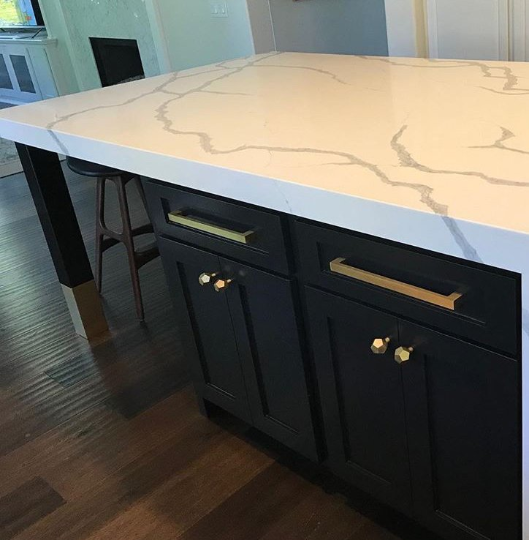Add Stability and Charm with Tough Legs For Kitchen Island Installations
Add Stability and Charm with Tough Legs For Kitchen Island Installations
Blog Article
A Guide to Choosing the Perfect Legs For Cooking Area Island for Your Home
Picking the optimal legs for your kitchen area island is a nuanced choice that affects both the capability and visual allure of this main space. As you think about these aspects, it becomes obvious that the right legs can transform not only the appearance of your kitchen area but also its functionality for years to come.

Comprehending Cooking Area Island Legs
When picking legs for a cooking area island, it's vital to recognize their functional and visual roles in the general style. The legs serve as an important assistance system, ensuring security and longevity for the island, which usually operates as a work space, eating location, or gathering spot. Consequently, the option of product and construction strategy have to be durable adequate to stand up to day-to-day usage and potential wear.
Along with their architectural obligations, legs add significantly to the island's visual charm. They can improve the kitchen area's design, whether with standard, modern, or diverse styles. The height and percentage of the legs are also important factors to consider; they need to balance with the island's kitchen counter height while making certain comfortable seating for those utilizing the room.
In addition, the leg style can affect the overall circulation of the kitchen. Open, ventilated leg styles can create a feeling of agility, while strong, considerable legs might communicate an extra grounded and secure visual - Legs For Kitchen Island. Recognizing these practical and aesthetic facets will guide house owners in making informed options that enhance their kitchen area's layout and improve its use
Popular Styles and Products
The choice of legs for a kitchen area island includes a selection of preferred styles and materials, each offering unique attributes that can enhance both performance and aesthetic appeals. Traditional legs usually display ornate details and workmanship, enhancing traditional cooking area layouts.

Height and Security Factors To Consider

Security is another essential factor to consider. The legs of the kitchen area island need to offer ample assistance, making sure that the framework can hold up against daily use without shifting or tottering. Material selection plays a significant function in stability; steel legs, for instance, tend to offer better stamina contrasted to timber. Additionally, making certain that the island is safely anchored to the floor or wall surface can enhance security, especially for bigger islands that may birth considerable weight.
Matching Your Kitchen Visual
Picking the appropriate legs for your kitchen area island about his surpasses capability; it likewise plays a considerable function in the overall visual of the space. When choosing legs, take into consideration the layout style of your kitchen area. For a modern look, sleek steel or minimalist designs can produce a tidy, modern vibe. On the other hand, rustic or conventional cooking areas frequently take advantage of wooden legs with elaborate detailing or a troubled surface, boosting warmth and personality.
Legs that complement or contrast with your island's surface area and surrounding cabinetry can produce visual harmony or striking focal factors. In addition, consider the surface of the legs; matte, shiny, or distinctive finishes can considerably affect the overall feel of the kitchen area.
Installment and Maintenance Tips
Setting up kitchen area island legs calls for careful focus to detail to guarantee both security and aesthetic allure. Begin by choosing a suitable location for your island, guaranteeing it is degree and has ample space for motion. Make use of a stud finder to locate wall surface studs if you are attaching the legs to a wall surface or making use of braces for included assistance. Mark the positioning click this link of the legs properly prior to boring.
When safeguarding the legs, utilize top notch screws and, if essential, wood adhesive for added strength. For steel legs, ensure that you are using ideal supports and tools to stop damages to your flooring. It is advisable to inspect for levelness after installment, making adjustments as needed to stay clear of tottering.
Maintenance is equally vital for long life - Legs For Kitchen Island. Routinely check the legs for any indications of wear or helping to loosen, particularly in high-traffic locations. Clean the legs with an ideal cleaner, preventing abrasive materials that may scratch the surface. For wooden legs, think about using a wood conditioner occasionally to keep their finish. By following these setup and maintenance ideas, you can make certain that your kitchen area island legs continue to be both functional and aesthetically appealing.
Final Thought
Finally, picking the ideal legs for a kitchen island necessitates cautious factor to consider of height, stability, and aesthetic compatibility. By picking suitable products and designs that line up with the general kitchen area design, functionality can be boosted while preserving aesthetic allure. Appropriate installation and recurring upkeep even more add to the resilience and longevity of the kitchen area island. Ultimately, thoughtful leg selection plays a vital role in elevating both the practicality and design of the cooking area area.
When choosing legs for a kitchen island, it's crucial to recognize their visual and practical functions in the general design. Open, airy leg styles can create a feeling of agility, while solid, substantial legs may communicate an extra grounded and secure visual. The legs of the kitchen area island must supply appropriate assistance, making sure that the framework can endure daily usage without wobbling or changing.Mounting cooking area island legs needs mindful attention to information to make sure both security and visual allure.In conclusion, picking the suitable legs for a cooking area island requires careful factor to consider of elevation, stability, and aesthetic compatibility.
Report this page